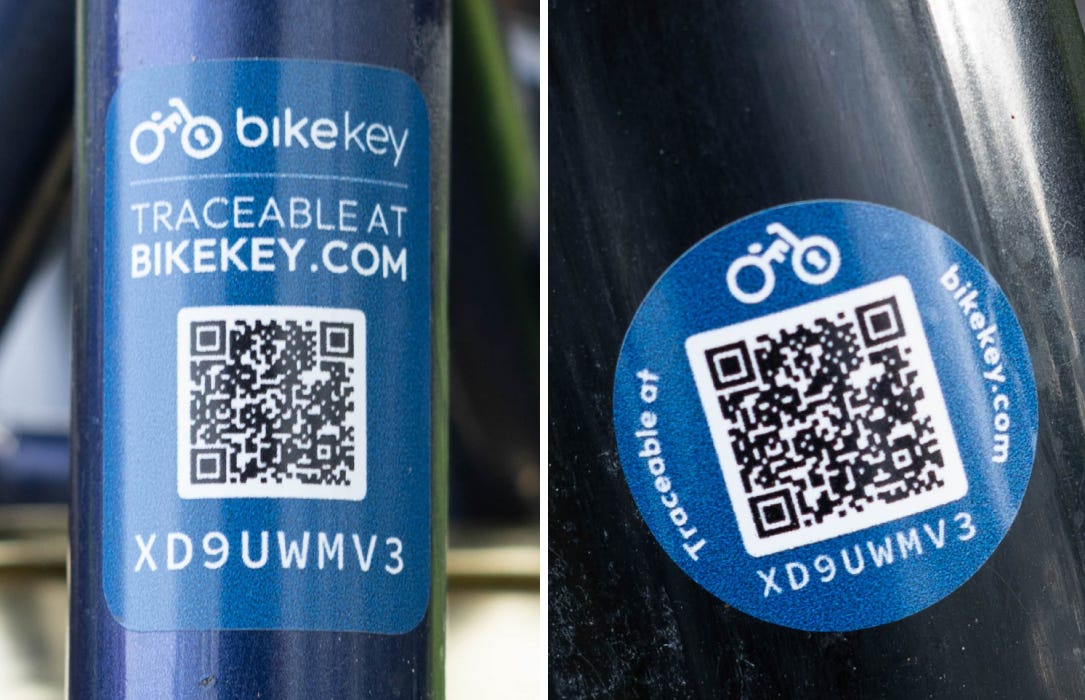This table shows the average cost of cycling for society to be negative. Meaning society gains from cycling. €1.8 per km is what you give to all of us when cycling on an analog bike. On an e-bike, the amount is just over €1 per km.
These results came out in 2020 when the big consulting company COWI looked at the effect of cycling on Danish society for the Danish Ministry of Transportation. They looked at a lot of factors including air pollution, climate effects, noise, accidents, traffic congestion, infrastructure, and health system expenses (yes, hospitals are a shared expense in Denmark).
In short: The improved health from cycling reduces hospital costs way more than the cost of a few extra accidents. And everything else is minimal relative to this.
Thinking about that is pretty insane - and you don’t even need to calculate the cost of taking a car (even if electric). It is so obvious why cycling to work is a good choice.
But it’s too far for me
That is one of the funny things when discussing transportation. It should be about averages, statistics, and effects. But 2 minutes into any such discussion someone will say “But I…”.
So here are the types of numbers relevant to this discussion.
How far do we actually commute? - this is for Denmark but similar distributions are found in other places.
So if your commute is too long for cycling you would be part of a minority. Maybe 20%, maybe 30%, but clearly somewhere in that range. So in this case this type of discussion is not really about you. It is about the majority which is what matters.
BTW, imagine if all those about 2M people with a commute below 30 km got on a bike (e-bike or analog) for just one day - that would be a plus for the society of about €42M. For just one day. Wow.
With that - Happy New Year. You know what to do now :)
And the second thing you should do is think about this:
How about getting us involved in your next development project with electronics, software, mechanical, wireless, sensors, test setups, etc. ?
We are ready to get busy on your project right now.
TECH STUFF
Workshop: How to measure torque?
Okay, having spent the last few years focused on torque measurement feels a bit narrow - but also nice in a way to have something you know really well. So well now that we are officially teaching this. Also to you if you want.
It seems so simple - yet we have seen so many issues that simply stem from not having thought about this enough. We have likely already thought about it too much. So let us share that knowledge with you before you make simple mistakes and get to better solutions fast.
These are three typical shapes of metal that are used to measure torque.
The tube on the left is great. Very strong in most directions. Apply torque and you get a very uniform strain on the surface. Really good for measuring torque with a strain gauge.
The disc on the right is a simple shape, which is always good. If you apply torque between the inner hole and the outer rim, there is a strain all over the disc. But it is not uniform, so that is one problem you have to think about. There are more.
The spoked disc in the middle is similar to what you see in bike spider power meters. This can be designed to work quite well, but with the much more complex shape, there is a lot more to watch out for.
Krisitan who teaches this workshop has spent a lot of time understanding strain and how to measure that with strain gauges. And he has spent a lot of time doing FEM simulations of various metal shapes to understand how to do this right.
Practical
The workshop runs over a week with a video meeting every day of about an hour. All the real learning and work happens between the meetings. This is where you (and your team) design the metal parts where torque is measured. Daily iterations to get to a good solution. The goal is to have a useful solution for a prototype at the end of the week.
Let me know if you are interested in Kristian’s workshop?
NERD STUFF
Yes I know I already told you about the wireless throttle project for my DIY electric touring trailer - here somewhere in Switzerland. But there has been some progress and I got to show you this. A custom board that makes the whole thing into a more useful size. Not super small, but small enough that it can easily fit on the handlebars.
This tiny board holds everything needed for the throttle (the wireless module is not mounted yet, but fits on the back side). But this board does so much more. It will also work for interfacing strain gauges and provides a nice digital interface to that. This is something I will talk more about later as I get it characterized. And the same board will work for the other end of the wireless throttle - the trailer side.
The next step is to get the thing programmed, wired up, and put on the bike. Stay tuned.
FUN STUFF
This crazy guy is Justin LE. He is the guy behind GRIN - serving e-bike DIY’ers with all sorts of good parts from Canada. A tinkerer of all things e-bike - and more.
I find the idea of making an electric unicycle is genius. Genius in the sense that this is the ultimate test of torque sensor and motor controller response and latency. Give it a watch - amazing contraption:
But the most amazing thing is really that this is possible today. Even as DIY. Yet so many commercial e-bikes are so far from the instant response feeling. Justin proves it can be done in your garage. Let us get all e-bikes to this level of instantaneous pedal-to-motor response. For 3 reasons:
More fun to ride (=> more km on a bike, which is good for society/health)
Safer to ride (more predictable - just survived a short ride on an e-bike on slippery winter roads and what is easy-peasy on an acoustic bike is really unsafe on an e-bike)
Longer battery life (direct response to pedal torque input => you work a bit more => battery lasts longer)
Say no to e-bike ghost-pedaling!
FRIENDS
Bikekey
Out to tackle a pretty big problem: Bike theft. Or maybe rather recovery of stolen bikes. Our friends Bikekey are just down the stairs from the Sensitivus office.
Check them out - unfortunately, you may have to turn on the translation feature if you don’t read Danish. The only English text they have yet is on the tamper-proof QR code stickers (they also do a laser engraving version).
We see the adoption of e-bikes being held back to some degree by the risk of bike theft, so I support their efforts 100%. I believe this problem needs to be solved in a combined effort including both international bike registration a’la the Bikekey QR codes, more police efforts, mandatory insurance availability, redesign of cities to provide more street-level safe bike parking, etc.
ABOUT
I have been spending the last 10 years on sensors and technology for bikes. Both are things that I really enjoy. Technology for bikes can be many things - these are the types of products and technologies I can talk about from experience:
Power meters (to measure how hard you pedal for training purposes - but actually valuable for much more than just that). A product with a high retail price and a low BOM price. Mostly sold as after-market.
Case: Technology still on the market by THM - The Clavicula PM crankset.Brake sensors (for optimizing MTB downhill performance). Very niche product for elite riders, which may eventually slowly become more widely accepted. Pure after-market.
Case: Technology on the market from BrakeAce.
e-bike torque/cadence sensors (to make e-bikes feel more like “analog” bikes on a really “good leg day”). Super high volume product with a fairly low sales price - a pure B2B product for integration into a motor design or similar.
Case: Technology on the market from Sensitivus, but not quite out in stores yet.
Each of these examples has occupied a good chunk of my life over the last 10 years, but there is more. A lot more. This is a story for another day.
P.S.
Over on EE-Training I have some super nerdy courses coming up - check this out if you are into designing the very fastest and most efficient digital bords today with serious memory interfaces:
Open the Black Box of Memory, Copenhagen, Live, Feb 19-21, 2024
Open the Black Box of Memory, Munich, Live, Feb 26-28, 2024
Signal Integrity w/Hands-On Simulation, Online, Mar 4-8, 2024
Signal Integrity w/Hands-On Simulation, Online, Apr 15-19, 2024
Find it all on ee-training.dk
[[ LET’S KEEP UNF***KING THE PLANET - ONE EBIKE AT A TIME ]]









